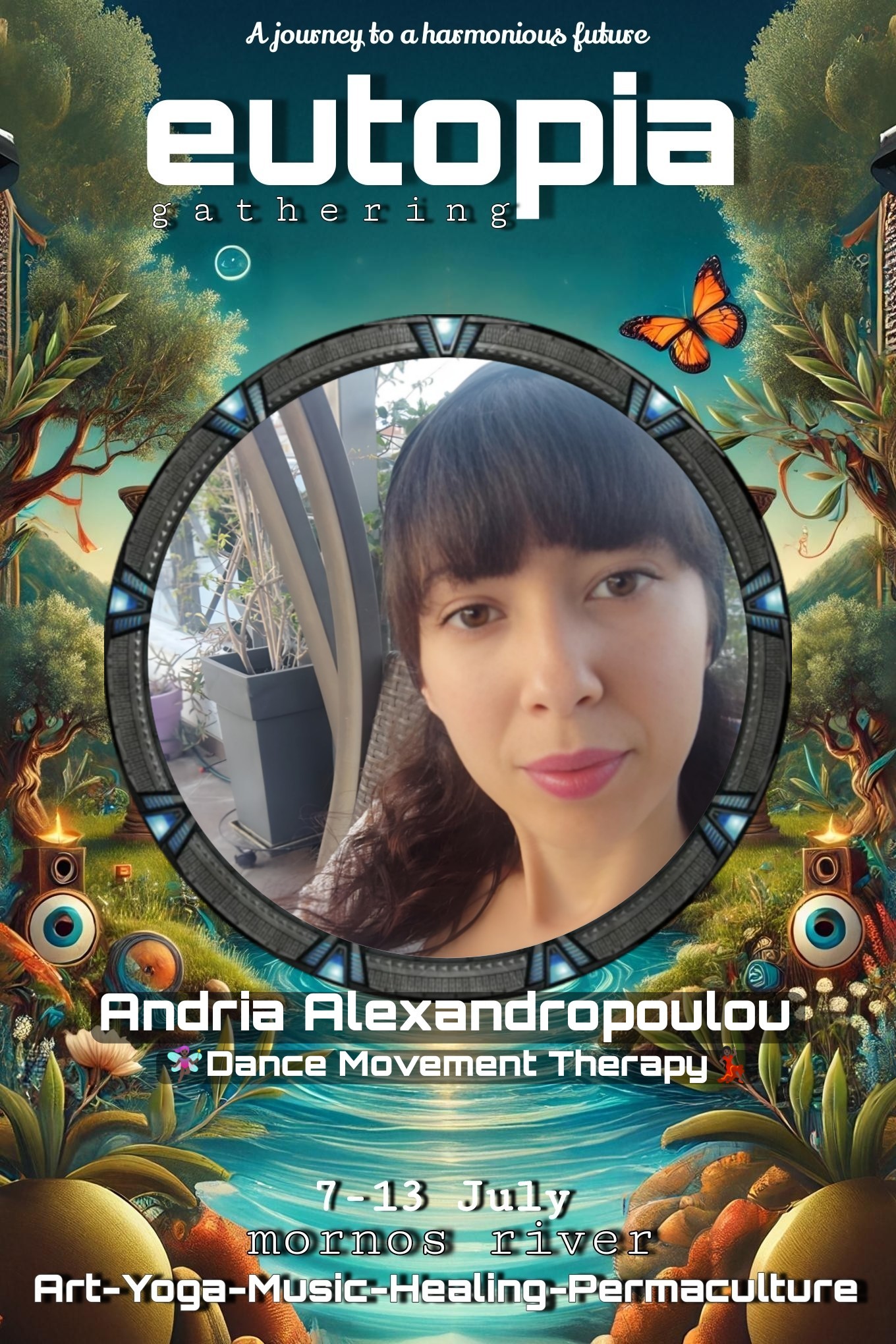
Andria Alexandropoulou
Because dance is not just expression. It's a return to the Self.
About the Facilitator
🌿When rhythm calls, a body remembers. Within the pulse of the djembe awakens the embryonic heartbeat — our first sound. From stillness to activation. From freeze to flow. Andria Alexandropoulou invites us into a ritual of movement, where the body becomes language and dance becomes story. In a safe, warm, and creative space, we meet our personal and collective memory. We awaken the hidden potential stored in our cells. We transform experience into art, and expression into healing. Because dance is not just expression. It's a return to the Self. And the body... knows the way. 🌱 Open to all. No previous dance experience required.
Workshop Details
Dance Movement Therapy 💃🏿
🌬️🐾 Dance therapy through primitive expression suggests movements to the sound of the African djembe, whose sound resembles the heartbeat. It thus reactivates the vital impulse, as it activates the initial sound bath, that is, the beat of the maternal ❤️ heart perceived by the embryo. This rhythm simultaneously provides safety and stimulation, 'calling' the body to move. It restores the balance between time, space, and the body. In the context of dance therapy, a non-verbal dialogue is established using the body, movement, gaze, rhythm, voice, and song as symbols—not words! Through the repetition of movement, each participant has the opportunity to inhabit their body and to begin to give their own meaning, to dance their own personal story without needing to speak about it. Primitive expression comes from the rituals of traditional societies in Africa. The roots of the dance are rooted in the ground. "Modern primitive" or "Expression primitive". The term "primitive" refers to what is universally first for humanity. Chronologically, dance has been an integral part of human activity since ancient times, allowing them to be participating creators and not spectators. Genetically, the term primitive refers to the primary psychic structures that organize the child's development! The basic hypothesis is: that we can have therapeutic effects on a psychic level if we can contribute to the recovery of the cohesion of the body's structure. The memories of the human body are stored at the cellular level. We can tap into the recovery of strength in the structure and movement of the body. ♡ The catalytic action of rhythm: From inertia to mobilization. If the question is Rhythm, the answer is movement. Could what initially numbs us, freezes us, immobilizes us evolve into action? How can we come into contact with the latent potential of such a condition? With rhythm as our main tool, we will attempt dance transitions from inertia to mobilization. Through movement, we will broaden the way in which rhythm retrieves our hidden potential! The ritual use of movement and dance aims at connection with the Self and others and the sublimation of the material that the group carries. Dance therapy is the psychotherapeutic use of movement and dance through which the individual creatively participates in a process that promotes their cognitive, emotional, and social integration. Dance therapy advocates that: The body mirrors its personal history, personality, and the emotional state of the individual. Through movement, we have access to everything concerning the pre-verbal stages of development and maturation. The main tool is the body, which, with the guidance of the dance therapist, discovers spontaneous and authentic movement, the personal and the common group rhythm, its own motor vocabulary. The person as a "dancer" rediscovers their personal and collective memories and experiences, finds again the joy of the "living body". Thus, within a climate of safety and trust, a space of creative freedom and expression of individuality is created within the framework of the collective experience. Primitive expression emphasizes the value of the group process, considering the group a great therapeutic and pedagogical tool. Nevertheless, it can also function on an individual level. It is aimed at individuals of all ages—children, adolescents, adults, the elderly—without requiring previous dance experience.